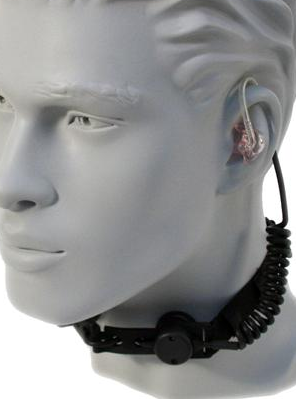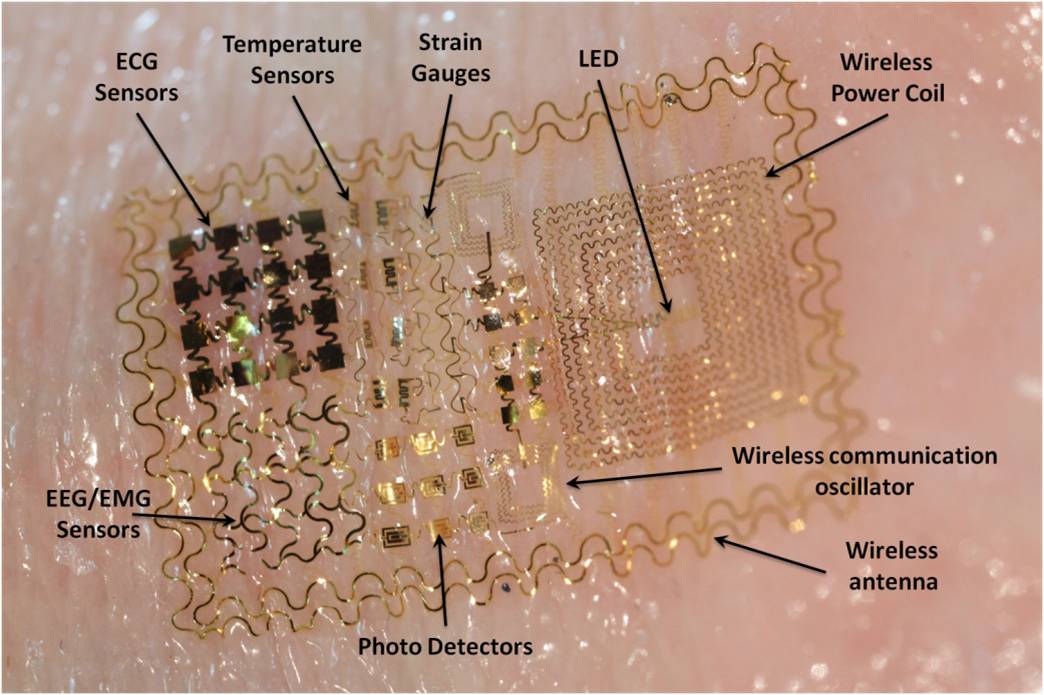Motorola Mobility/Google files patent application for electronic ‘throat tattoo’
November 13, 2013

(Credit: Motorola Mobility)
The patent application reads:
The electronic skin tattoo can include an embedded microphone; a transceiver for enabling wireless communication with the MCD (mobile communication device); and a power supply configured to receive energizing signals from a personal area network associated with the MCD. A controller is communicatively coupled to the power supply. The controller can be configured to receive a signal from the MCD to initiate reception of an audio stream picked up from the throat region of the body for subsequent audio detection by the MCD under an improved signal-to-noise ratio than without the employment of the electronic skin tattoo.
[+]
In other words, this is an improved (and less unsightly) version of
the “throat mic” long used by the military and others for high-noise
environments. A throat mic is designed to eliminate background noise by
picking up mechanical vibrations from the vocal cords directly, rather
than via air (but in the process, losing some of the articulation added
in the mouth, and also at lower quality — example here).
Tactical Throat Microphone Headset TTMK-III (credit: Tactical Command Industries)
The patent application also mentions that the device would communicate with smartphones, gaming devices, tablets, and wearable computers tech (like Google Glass) via Bluetooth or other methods (replacing the wire shown in the throat mic), and that the device could do pattern-matching, presumably to detect commands such as “OK, Glass,” which could be a main purpose, given the limited quality of a throat mic.
The device could also be applied with adhesive tape, or go on a collar or a band around the user’s neck, the application says, and the device could also be used as a lie detector, which suggests a use in military or law-enforcement interrogation: “Optionally, the electronic skin tattoo can further include a galvanic skin response detector to detect skin resistance of a user. It is contemplated that a user that may be nervous or engaging in speaking falsehoods may exhibit different galvanic skin response than a more confident, truth telling individual.”
* An “electronic skin tattoo” or “e-tattoo” is a foldable, stretchable electrode circuit that can noninvasively detect or measure various signals from the body. Here’s an example:
[+]

A
foldable, stretchable electrode array that can noninvasively measure
neural signals (i.e. EEG) without the need for gel (credit: Coleman lab,
UCSD)
(¯`*• Global Source and/or more resources at http://goo.gl/zvSV7 │ www.Future-Observatory.blogspot.com and on LinkeIn Group's "Becoming Aware of the Futures" at http://goo.gl/8qKBbK │ @SciCzar │ Point of Contact: www.linkedin.com/in/AndresAgostini
 Washington
Washington